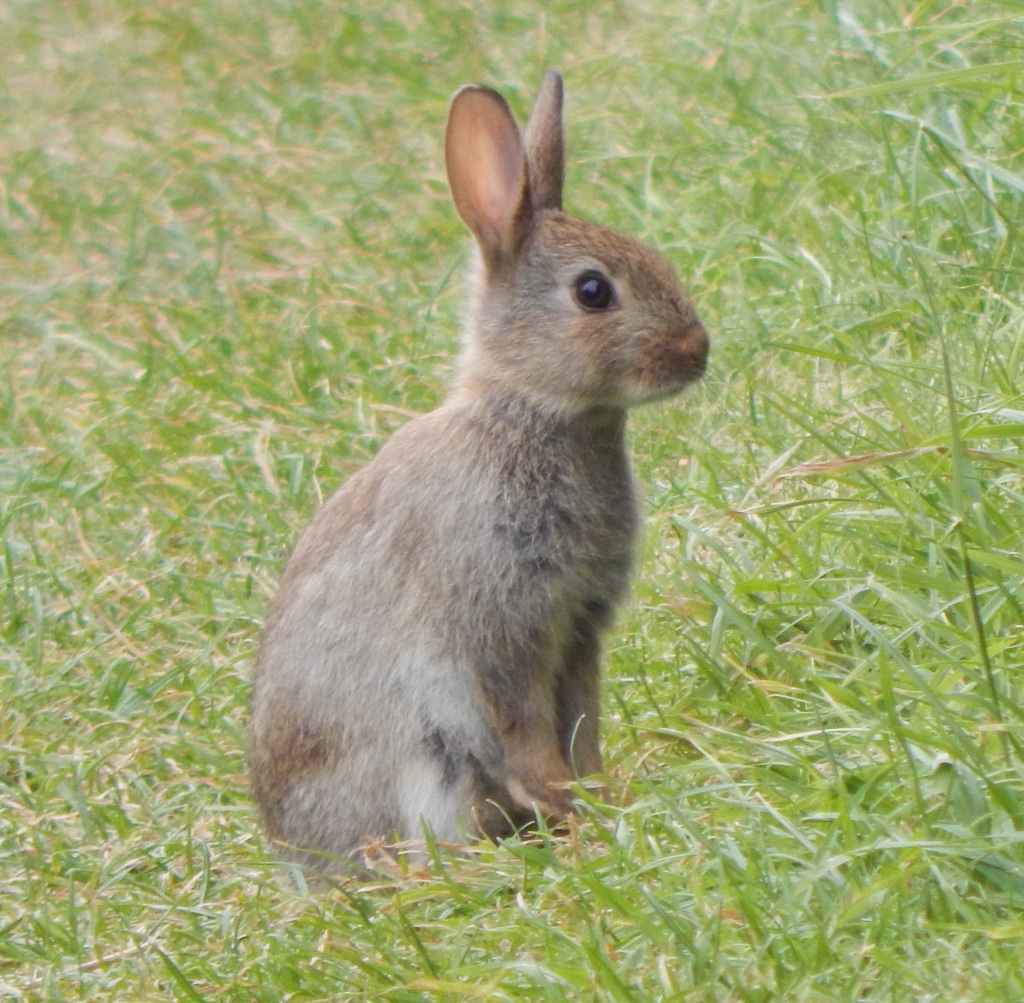
[243] Oryctolagus cuniculus, Rabbit
Introduction
Oryctolagus cuniculus, the (European) Rabbit, is the familiar small animal often anthropomorphized in Children’s fiction. It is more often called a coney in the USA.
Several related species are also called rabbits.
Taxonomy
Kingdom – Animals
Phylum – Chordates
Class – Mammals
Order – Lagomorpha (Rabbits, Hares and Pikas)
Family – Leporidae (Rabbits, Cottontails and Hares)
Genus – Oryctolagus
Scientific Name – Oryctolagus cuniculus
Name
The Old English had no name for this introduced species. In the Twelfth Century ‘coney’ was used for its pelt. Rabbit comes from Walloon (Belgium and northern France) rabett, a diminutive of the earlier Dutch word robbe. At first the adult was a coney and the young was a rabbit. Coney and the Latin cuniculus come from Ancient Greek kuniklos. (The animal was not native to Rome or to Greece.)
The Rabbit Family
They used to be considered as rodents but now rabbits and hares have their own Order, which includes pikas (also known as coneys). Like rodents their incisor teeth grow continuously and need continuous chewing on fibrous food to prevent them from growing too long.
What distinguished rabbits and hares from pikas and other animals is the way they move by jumping with their strong hind legs. Rabbits live in colonies in burrows.
Description
The form of Oryctolagus cuniculus is very familiar with its long ears, normally held erect when it stops moving. The furry coat comes in various shades of greyish brown.






They live in small groups in warrens, which form a network of burrows. Young are born blind, hairless and totally dependent.
They eat plant foods, preferably grasses.
Habitat and use
Rabbits are native to southwestern Europe. They were probably introduced to Britain as a farmed species – for food and fur – by the Romans and the Normans, but did not spread to wild populations until about the Eighteenth Century.
Their ideal habitat is short grassland and they may spend all of their time within fifty metres of their burrow.
They have been domesticated for many years, initially for food but now as show animals and as pets. There are three hundred recognized breeds. Selective breeding has led to many breeds that are much larger than the wild rabbit.
Other Notes
Rabbits cane be seriously invasive and have become a major pest in Australia.
I feel that I am leaving out quite a lot with rabbits because there is a danger of saying too much. All I will say about cultural references is to remind you of Beatrix Potter and Watership Down.
You may see them on quiet roadside verges early in the morning but they will disappear fast if they see you.
Hares
As always, the use of names is not consistent but the general rule is that all species in the genus Lepus are called hares or jackrabbits. All other species in the family Leporidae are rabbits or cottontails. (The American species tend to be called cottontails.)
Generally, hares have longer ears, they live alone or in pairs, and they are able to fend for themselves soon after birth.
The European Hare or Brown Hare, Lepus europaeus, is native to Europe. It may have been introduced to Britain by the Romans but is now found in all of the UK apart from Ireland and northern Scotland (where the Mountain Hare is found.)
You are much less likely to see a Hare than a Rabbit. You may spot one in the open countryside at a distance.

I won’t go into its use as food or in hare-coursing, or the March Hare of Alice in Wonderland, or the Tortoise and the Hare of Aesop.
See also
We still have [296] Rats and [311] Squirrels to come.
